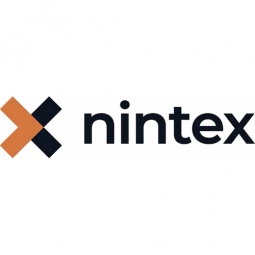Technology Category
- Functional Applications - Manufacturing Execution Systems (MES)
Applicable Industries
- Equipment & Machinery
- Metals
Applicable Functions
- Human Resources
- Sales & Marketing
Use Cases
- Additive Manufacturing
- Personnel Tracking & Monitoring
Services
- Testing & Certification
About The Customer
Quaker Houghton is a global leader in industrial process fluids. Their business is to make other businesses run better by optimizing their processes, reducing their costs, and advancing their safety and sustainability around the fluids they use to make, roll, cut, or cast metals. The manufacturing processes for which its customers use Quaker Houghton’s fluids are precise and sophisticated. If anything’s just a bit off, it can show up on the customer’s shop floor in the form of chemical deposits on a machine, foam in a central system, or defects on steel or aluminum sheets. Quaker Houghton has nearly 20 labs around the world to conduct experiments and analyses to resolve these issues.
The Challenge
Quaker Houghton, a global leader in industrial process fluids, faced a challenge in their customer service process. Their sales and service personnel would send customer samples to their labs for analysis to resolve customer problems. However, they lacked an efficient method to determine which of their nearly 20 labs worldwide should receive the samples. The process was further complicated by the need for tracking, approving, and reporting on the work activities. The existing process was driven by email, which was notoriously uneven in efficiency. It also required additional time from lab managers to locate and organize data to fully understand the overall demand. Quaker Houghton needed a better, faster way to streamline this process to enhance the customer experience.
The Solution
Quaker Houghton adopted a solution using Nintex Forms and Nintex Workflow to automate the process of initiating lab requests. The solution, known as the 'online tool for non-routine service requests', allowed customer-facing sales and service personnel to access the lab request form from an online portal. They could then complete fields and drop-downs with details on the fluid type, how the customer uses it, and the resulting defect. Calculations behind the Nintex Form would then identify the most appropriate lab for the service request and send samples for analysis. Nintex Workflow would route the request to appropriate reviewers and approvers, keeping them in the loop. Once the lab completed its analysis, the resulting report would be sent to all relevant parties and archived in SharePoint for easy access. The solution also included a dashboard that provided a clear overview of all requests at all the labs for all the product lines.
Operational Impact
Quantitative Benefit

Case Study missing?
Start adding your own!
Register with your work email and create a new case study profile for your business.
Related Case Studies.

Case Study
Smart Water Filtration Systems
Before working with Ayla Networks, Ozner was already using cloud connectivity to identify and solve water-filtration system malfunctions as well as to monitor filter cartridges for replacements.But, in June 2015, Ozner executives talked with Ayla about how the company might further improve its water systems with IoT technology. They liked what they heard from Ayla, but the executives needed to be sure that Ayla’s Agile IoT Platform provided the security and reliability Ozner required.

Case Study
IoT enabled Fleet Management with MindSphere
In view of growing competition, Gämmerler had a strong need to remain competitive via process optimization, reliability and gentle handling of printed products, even at highest press speeds. In addition, a digitalization initiative also included developing a key differentiation via data-driven services offers.

Case Study
Predictive Maintenance for Industrial Chillers
For global leaders in the industrial chiller manufacturing, reliability of the entire production process is of the utmost importance. Chillers are refrigeration systems that produce ice water to provide cooling for a process or industrial application. One of those leaders sought a way to respond to asset performance issues, even before they occur. The intelligence to guarantee maximum reliability of cooling devices is embedded (pre-alarming). A pre-alarming phase means that the cooling device still works, but symptoms may appear, telling manufacturers that a failure is likely to occur in the near future. Chillers who are not internet connected at that moment, provide little insight in this pre-alarming phase.

Case Study
Goldcorp: Internet of Things Enables the Mine of the Future
Goldcorp is committed to responsible mining practices and maintaining maximum safety for its workers. At the same time, the firm is constantly exploring ways to improve the efficiency of its operations, extend the life of its assets, and control costs. Goldcorp needed technology that can maximize production efficiency by tracking all mining operations, keep employees safe with remote operations and monitoring of hazardous work areas and control production costs through better asset and site management.

Case Study
Premium Appliance Producer Innovates with Internet of Everything
Sub-Zero faced the largest product launch in the company’s history:It wanted to launch 60 new products as scheduled while simultaneously opening a new “greenfield” production facility, yet still adhering to stringent quality requirements and manage issues from new supply-chain partners. A the same time, it wanted to increase staff productivity time and collaboration while reducing travel and costs.

Case Study
Integration of PLC with IoT for Bosch Rexroth
The application arises from the need to monitor and anticipate the problems of one or more machines managed by a PLC. These problems, often resulting from the accumulation over time of small discrepancies, require, when they occur, ex post technical operations maintenance.







